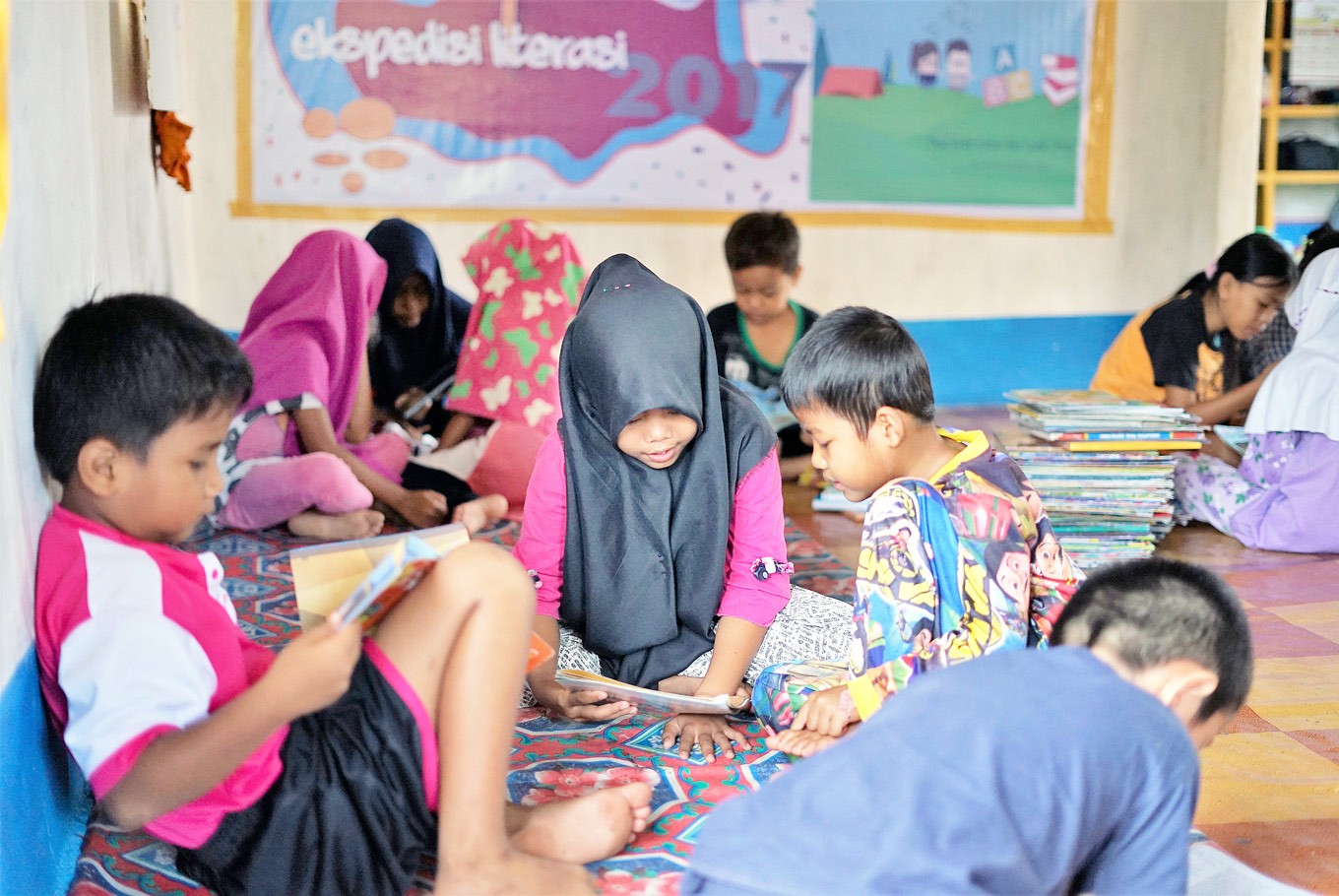Essay: Free reading for children
The more the students are engaged in free reading, they suggest, the more likely they will develop a love of reading.
Change Size
 Simple joys: Books are considered a luxury in the remote area of Bukit Rimbang Bukit Baling Wildlife Sanctuary in Riau. (JP/Syafrizaldi)
Simple joys: Books are considered a luxury in the remote area of Bukit Rimbang Bukit Baling Wildlife Sanctuary in Riau. (JP/Syafrizaldi)
C
hildren’s excessive screen time has been among the biggest concerns voiced by millennial parents who spend most of their time in the workplace. Low academic achievement, asocial behavior, emotional instability and physical inactivity have been cited as the potentially damaging effects of children’s unbridled screen activity.
Meanwhile, school teachers often complain that their tech-savvy students seem to exhibit lackadaisical attitudes toward their academic performance in school, as evidenced in their declining academic achievements.
The cure for this quandary is to seek alternative activities that can strike a balance between children’s screen addiction and the tedium of academic routines they face almost every day.
At this juncture, the government can be lauded for stepping in and create a reading policy for school children, with the aim to develop literacy awareness and to offer a path to learning for pleasure.
As part of literacy promotion in schools, the Education and Culture Ministry has reiterated the importance of clinging to Regulation No. 23/2015, which mandates that every school must allocate at least 15 minutes of free reading before class starts. This endeavor is called the School Literacy Movement.
Distinct from traditionally instructed in-school reading where pupils read because they are obliged to read, in the free reading session, students are given ample latitude to select their own reading materials, ranging from the light ones such comics, magazines and novels, to heavier ones like textbooks.
Unlike instructed in-school reading, which compels students to give accountability, the in-school free reading sessions require no academic assignments. That is, students are not held accountable for what they have read. They are neither assigned to write a summary nor answer questions from what they have read. They simply read for their own pleasure on a voluntary basis. They read because they want to; not because they are instructed to.
In-school literacy campaigners say that the 15-minute reading session is an effective literacy-promotion activity, as well as a viable way of developing students’ reading habits. The more the students are engaged in free reading, they suggest, the more likely they will develop a love of reading.
There are indeed positive psychological and linguistic reasons for including a free reading session in schools prior to school hours. Psychologically, free reading is soothing and comforting. As it is often done in an anxiety-free environment, students are not pressured to read to meet the deadline and to be accountable for what they have read. They simply read to satisfy their inquisitiveness, to search information on they need or simply to entertain themselves. As such, free reading offers immense pleasure for readers.
It has been strongly believed that anxiety-free reading activities accelerate students’ comprehension of texts and memory retrieval. With no academic pressure, students may find reading a memorable experience and are more likely to engross themselves in this experience again whenever they like.
Linguistically, free reading has been proven as a strong predictor of students’ literacy growth. Research has found that reading for pleasure greatly contributes to students’ literacy improvement. Surprisingly, literacy skills can emerge even without formal instructions. More free reading often means an acquisition of vocabulary, sentence structures and graphic conventions. Thus, free reading provides students solid basic linguistic skills, which is considered necessary for writing.
In a similar way, free reading has become the best conduit to bridge the yawning gap that exists between light reading and heavy reading. It is a common practice in school that students are introduced to textbooks in their early age of learning; it’s no wonder that they eventually become resistant readers who often defy reading instructions in class and show no interests in reading.
The idea of resistant readers is, unfortunately, is taken to mean a lack of reading habits among children. This prevailing perception is often associated with the reading habit culture, a literacy myth that is always perpetuated among people.
Resistant readers are simply those who exhibit no interests in reading certain materials they find tedious and lacking communicative values. The dislike is also attributed to the fact that the materials are beyond the level of their current linguistic proficiency. Obviously, all of these have nothing to do with the lack of reading habit culture.
Free reading then can serve as a panacea that can help tackle the notion of resistant readers — both in children and adults. There are at least two reasons why this is so.
First, free reading gives beginning readers a sense of enjoyable literacy participation. Once children have developed this sense, they’ll find reading a pleasant experience and are then more likely to participate in this experience again. Second, it does not strictly require them to read for complete understanding, as has been the case in most schools today. It does not demand a book report on the part of the students. Thus, the perception that reading is a tedious and demanding activity is summarily dismissed.
With huge pedagogical benefits to the in-school 15-minute reading sessions, it would be remiss for schools not top make full use of it. More importantly, with the stigma of our children’s lack of reading habits prevailing among the public, the passion and eagerness children exhibit during the in-school leisure reading help debunk this long-standing literacy myth.
Finally, it seems that the School Literacy Movement now being promoted in schools nationwide is the most plausible way of taming resistant readers.
***
The writer teaches at the Graduate School of Applied English Linguistics of Atma Jaya Catholic University, Jakarta. He can be contacted at setiono.sugiharto@gmail.com.









